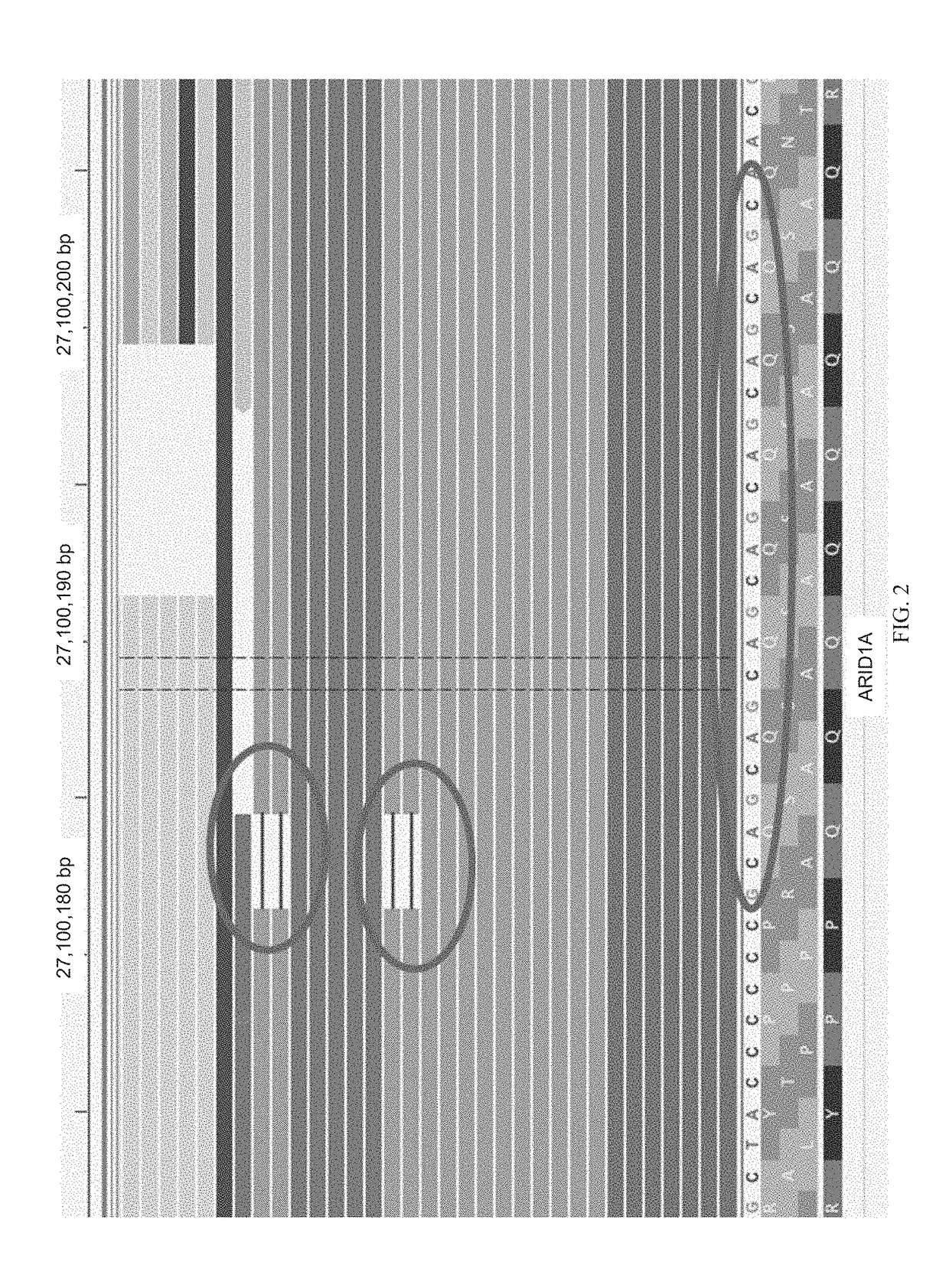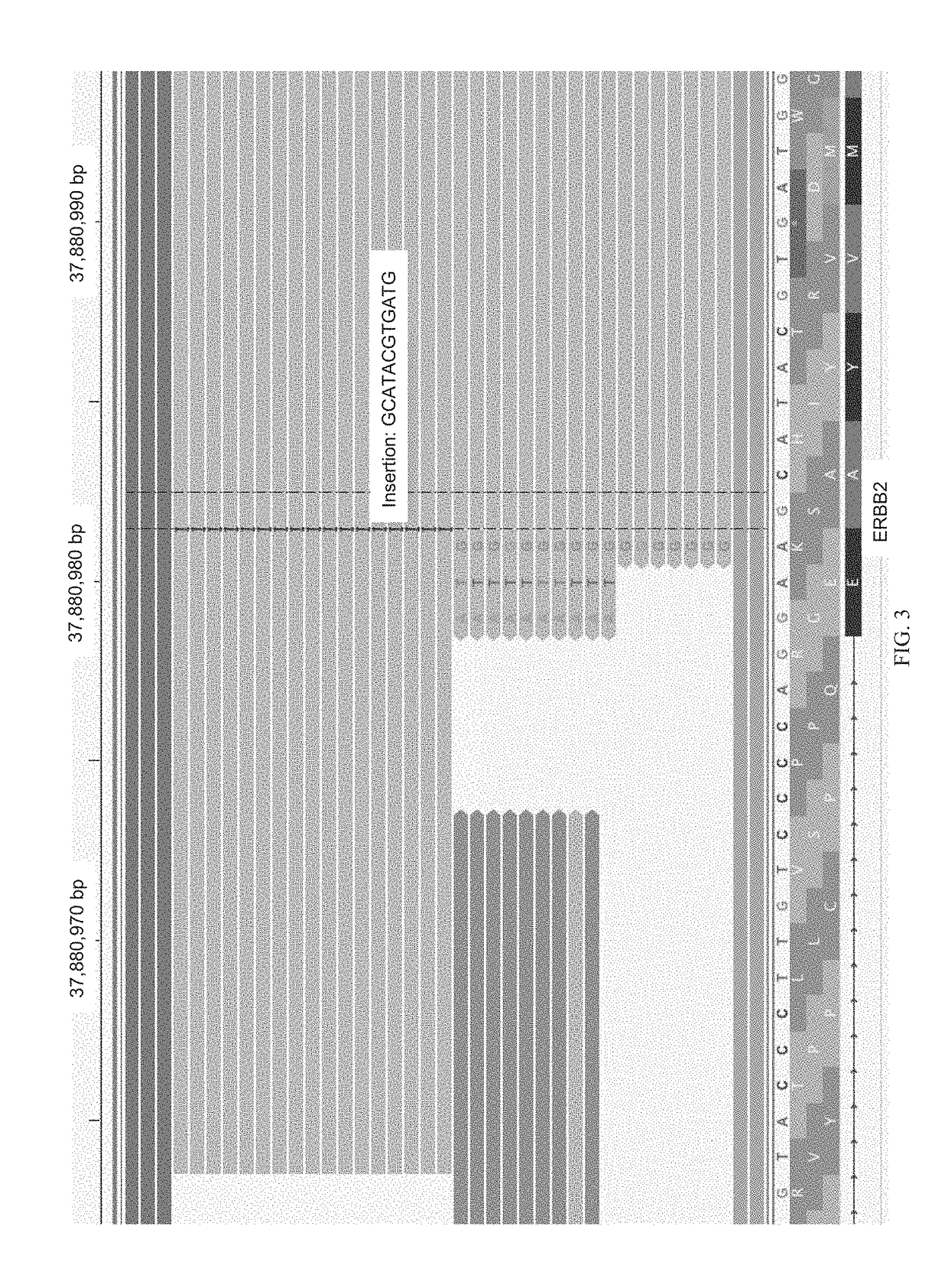Methods for multi-resolution analysis of cell-free nucleic acids
a cell-free nucleic acid and multi-resolution technology, applied in the field of multi-resolution analysis of cell-free nucleic acids, can solve the problems of reducing the sensitivity of detection at the hotspot region, the size of the overall panel, and the limited amount of sequencing data that can be obtained from a sample, so as to maximize the ranking function of sequencing load and utility, improve the accuracy of detecting an insertion, and improve the effect of capture efficiency
- Summary
- Abstract
- Description
- Claims
- Application Information
AI Technical Summary
Benefits of technology
Problems solved by technology
Method used
Image
Examples
Embodiment Construction
[0060]While various embodiments of the invention have been shown and described herein, it will be obvious to those skilled in the art that such embodiments are provided by way of example only. Numerous variations, changes, and substitutions may occur to those skilled in the art without departing from the invention. It should be understood that various alternatives to the embodiments of the invention described herein may be employed.
[0061]The term “genetic variant,” as used herein, generally refers to an alteration, variant or polymorphism in a nucleic acid sample or genome of a subject. Such alteration, variant or polymorphism can be with respect to a reference genome, which may be a reference genome of the subject or other individual. Single nucleotide polymorphisms (SNPs) are a form of polymorphisms. In some examples, one or more polymorphisms comprise one or more single nucleotide variations (SNVs), insertions, deletions, repeats, small insertions, small deletions, small repeats,...
PUM
| Property | Measurement | Unit |
|---|---|---|
| concentration | aaaaa | aaaaa |
| concentrations | aaaaa | aaaaa |
| depth | aaaaa | aaaaa |
Abstract
Description
Claims
Application Information
 Login to View More
Login to View More - R&D
- Intellectual Property
- Life Sciences
- Materials
- Tech Scout
- Unparalleled Data Quality
- Higher Quality Content
- 60% Fewer Hallucinations
Browse by: Latest US Patents, China's latest patents, Technical Efficacy Thesaurus, Application Domain, Technology Topic, Popular Technical Reports.
© 2025 PatSnap. All rights reserved.Legal|Privacy policy|Modern Slavery Act Transparency Statement|Sitemap|About US| Contact US: help@patsnap.com



